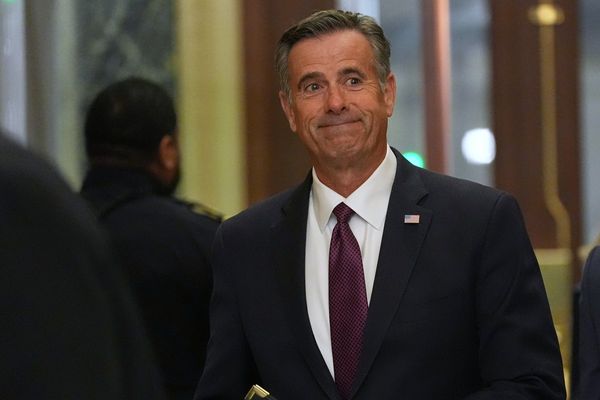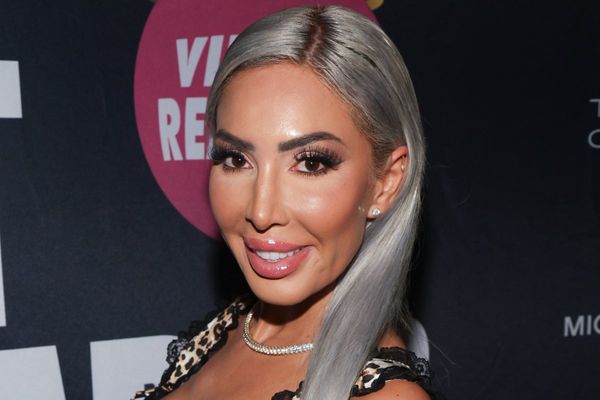
The first presidential election contest in the western US features a bifurcated primary and caucuses format that’s both confusing to voters and renders results difficult to understand.
Nevada’s primary for Democrats and (some) Republicans is on 6 February, while its caucuses for (other) Republicans is on 8 February.
The western battleground state, home to Las Vegas, has a much more diverse electorate than Iowa and New Hampshire. It could have been a pivotal part of this year’s road to the White House, and it may still be in the general election.
Some wanted to see the state go first in the nation because it’s a better cross-section of the country. Instead, the wonky system and seemingly inevitable victories for Joe Biden and Donald Trump make for a less-than-thrilling election.
How the Nevada primary/caucuses works this year
Democrats are participating in a primary election on 6 February. Republicans are also participating in the state-run primary, though the frontrunner, former president Donald Trump, is not on that ballot. Instead, the state GOP will run its own caucus on 8 February, where Trump and long-shot candidate Ryan Binkley are the only candidates. The winner of the caucuses will receive the 26 delegates that go toward the total needed to secure the Republican nomination. The Democratic primary winner will get its side’s delegates.
Primary ballots were mailed out to eligible voters already, though people can also vote in person. For the caucuses, voters must attend in person on 8 February from 5 to 7.30pm PT at their local polling location. The caucuses happen just that day, in person, and require a photo ID.
Voters have to be registered with a political party to vote in that party’s primary or caucuses, so the large portion of independent voters in the state need to sign up with a party ahead of time to be able to participate.
Who’s in the running?
For Democrats, Biden is certain to carry the vote, though a handful of unknown candidates are on the ballot, as is Marianne Williamson, the self-help author in a long-shot bid for the Democrats. Dean Phillips, the Minnesota congressman running the most mainstream challenge to Biden, is not on the ballot in Nevada, though he was in New Hampshire and South Carolina.
On the Republican side, Nikki Haley, the presumptive Republican runner-up and former UN ambassador, is on the primary ballot, but not the caucuses. The state party made it so candidates could only participate in one. Haley is the only mainstream candidate on the primary ballot there, though a host of also-rans are on it as well.
At the GOP caucuses, Trump is on the ballot, alongside Binkley, a pastor.
Voters can also select “none of these candidates” in the primary contests.
Why is the Nevada election so strange this time?
After the 2020 elections, Nevada’s legislature voted to move from a caucus system to a primary. Primaries are generally considered more accessible to voters than caucuses, which often require in-person attendance on a specific date and time.
The state’s Republicans didn’t support the idea of scrapping the caucus, and they didn’t like the idea of the primary taking place by mail. The state party has called the new primary an “all new, very expensive, and meaningless process”. They instead came up with a plan to have their own caucuses, not run or financed by the state. Candidates can only choose to participate in the primary or the caucuses, not both, while voters could cast a ballot in both if they want.
The caucus is widely seen as a way to boost Trump, as Haley’s voters could be more likely to vote by mail than Trump’s and Trump’s base more likely to turn out in force in person. But Trump was likely to win the contest regardless of format. Now, though, there’s the odd possibility that both Trump and Haley could win – but only Trump would get the delegates.
Predictably, the strange circumstances have caused rumors to fly, with some social media posts claiming election interference against Trump and others saying the former president didn’t file paperwork in time as reasons he’s not on the primary ballot. In reality, Trump elected to run in the caucuses instead.
Who are Nevada’s voters?
Nevada can still be considered a battleground state, though it’s not as close as true swing states like Arizona, Georgia or Wisconsin. The state legislature is controlled by Democrats, while the governor is a Republican. In the general election, Nevada is semi-competitive, though leans blue, but should see more investment from both parties than a state more certain to vote for one party over another.
Nevada is much more diverse than Iowa and New Hampshire: about 30% of its residents are Latino, 10% are Black and 9% are Asian, according to the census.
Politically, non-partisan voters make up the largest electoral bloc in the state, a nod to the west’s independence and reluctance to adhere to a party line. Nearly 770,000 voters are non-partisan, followed by 704,000 Democrats and 640,000 Republicans, the state’s most recent voter figures show.
When will we get results?
Polls close for the primary at 7pm PT on 6 February. The caucuses go until 7.30pm PT on 8 February. In both instances, results are expected soon after voting concludes.
The state-run primary results will be posted on a state website. The caucus results may be posted on the Nevada GOP website.
What will the results mean?
Both Trump and Haley could win in their respective election type, but only Trump would get delegates. In other states, delegates often get split up based on proportions of the vote share. In this instance, even if Haley wins the primary, there’s no way for her to get a portion of the delegates.
On the Democratic side, Biden will certainly sail to victory, meaning the results there won’t shock anyone. The primaries are so far proving the near-inevitability of a Biden-Trump rematch, making the results pretty uneventful.
Perhaps “none of these candidates” will get a larger share of votes than expected, showing voters’ confusion and discontent with the process. The state’s Republican governor, Joe Lombardo, told the Nevada Independent he plans to choose that option in the primary and then caucuses for Trump.
And turnout could be lower, another sign the double-election isn’t the right move, though it’ll be tough to assess turnout overall when Republican voters can cast ballots in both a primary and caucuses.
It’s also possible the bizarre system could create even more distrust of voting and elections among Republican voters, an ongoing theme for the party in the Trump era, because Trump’s name isn’t on the primary ballots. Trump, for his part, has told his supporters not to worry about the primary and “just do the caucus thing”.







